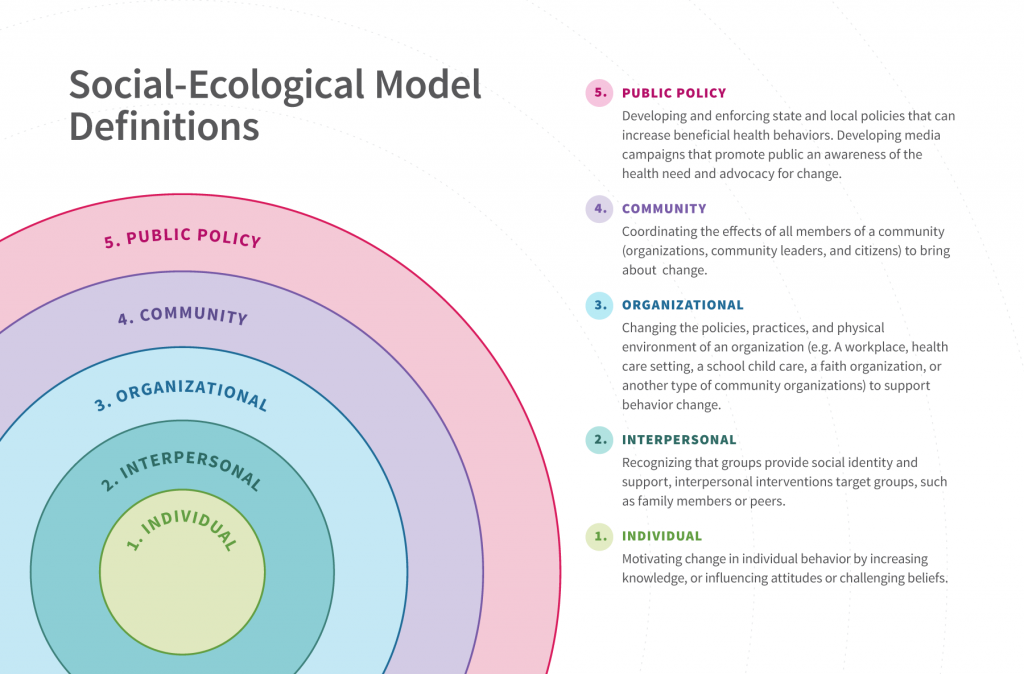1.2.3. Healthy Eating Patterns
Helping People Make Healthy Choices
It is not just ourselves, the food industry, and federal government that shape our choices of food and physical activity, but also our sex, genetics, disabilities, income, religion, culture, education, lifestyle, age, and environment. All of these factors must be addressed by organizations and individuals that seek to make changes in dietary habits. The socioeconomic model incorporates all of these factors and is used by health-promoting organizations, to determine multiple avenues through which to promote healthy eating patterns, to increase levels of physical activity, and to reduce the risk of chronic disease for all individuals. Lower economic prosperity influences diet specifically by lowering food quality, decreasing food choices, and decreasing access to enough food. Between 2011-2012, 8.3% of Canadian households experienced food insecurity.[1]
Figure 1.2.3.1 Social-Ecological Model.

Recommendations for Optimal Health
For many years, the Canadian government has been encouraging Canadians to develop healthful dietary habits. The first Canadian Food Guide was released in July 1942. Since then it has undergone several modifications, adapting to the latest scientific findings and the requirements of the Canadian population. The latest version of the Food Guide was released in 2019 and leaves the pervious rainbow schematic for a plate representation of how our diet should be balanced.
Everyday Connections

Interested in another reliable source for nutrition and health information? The “Got Nutrients?” website highlights the importance of meeting essential nutrient needs in order to maintain optimum health. This website, geared for those interested in nutrition, fitness, and health, posts short daily nutrition and health messages. Each short “Daily Tip” includes links to both a popular article and to a related scientific resource. For more information about “Got Nutrients?” visit, http://www.gotnutrients.net. To receive the “Daily Tips” by email, visit http://www.gotnutrients.net/email_alerts/subscribe.cfm
- Food Insecurity in Canada. Statistics Canada. https://www150.statcan.gc.ca/n1/pub/82-624-x/2015001/article/14138-eng.htm. Created: September 17, 2018. Accessed on: September 12, 2021. ↵

